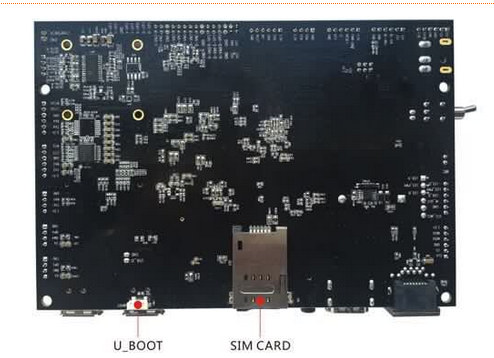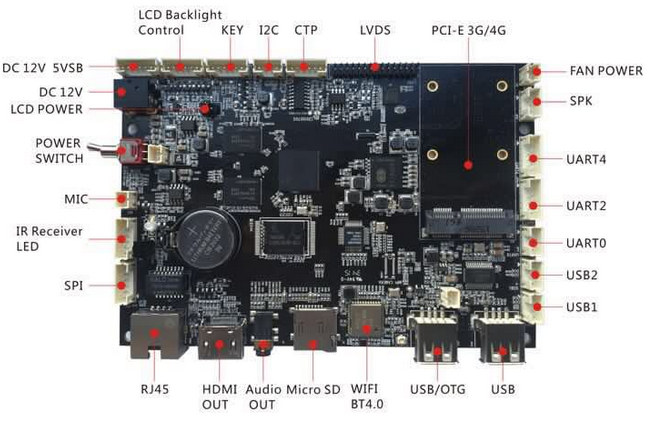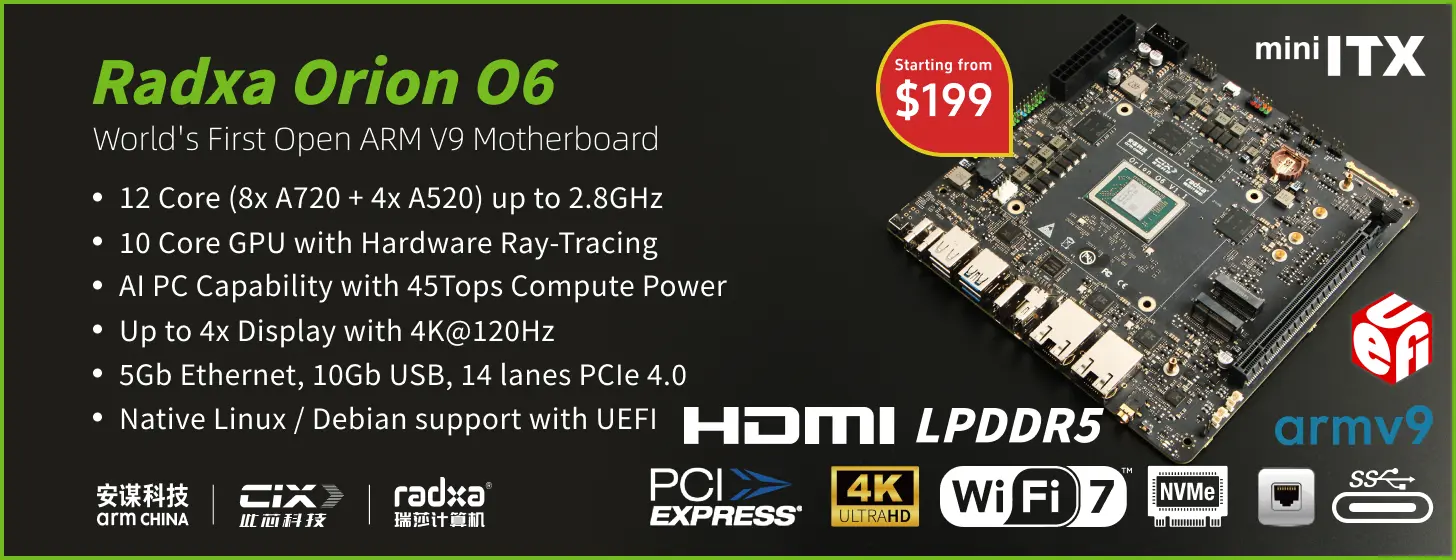MQMaker officially launched their WiTi router board earlier this week, but the company has also introduced ADBoard, an octa-core board specifically designed for digital signage with a connector for LVDS display including backlight, an RTC with backup battery, and a mini PCIe connector for 3G/4G connectivity combined with a SIM card slot.
- SoC – Allwinner A83T octa-core ARM Cortex-A7 @ 2.0 GHz with PowerVR SGX544MP GPU @ 700 MHz supporting OpenGL ES 2.0/1.1, OpenCL 1.1, and DX 9.3.
- System Memory – 1 GB DDR3
- Storage – 16 GB eMMC + micro SD slot
- Display Interfaces / Video Output
- HDMI up to 1080p60 with HDCP 1.2 and CEC support connector
- LVDS connector, LCD backlight control header and capacitive touch panel header
- Audio – HDMI, 3.5mm audio output, speaker connector, microphone connector
- Connectivity – Gigabit Ethernet, 802.11 b/g/n Wi-Fi and Bluetooth 4.0
- USB – 1x USB 2.0 host port, 1x USB 2.0 OTG port (full size), and 2x USB 2.0 headers on-board
- Serial – 3x UART headers
- Other Expansion Headers/Connectors
- 1x mini PCIe slot for 3G/4G modem and SIM card slot
- 1x SPI, 1x I2C headers
- 1x keys header, 1x IR receiver + LED header
- Misc – Power switch, U-boot button, fan header
- Power Supply – 12V input for board, LCD power header, header with 12V/5V output?.
- Dimensions & Weight – N/A
 The board is said to run Android 4.4, but there’s very little other information, probably because it’s not been designed as a community board, but instead for companies who may need integrate such board in large LVDS displays such as in retail locations, or possibly connected them in smaller one as in their bus fleet to monetize with targeted advertisement.
The board is said to run Android 4.4, but there’s very little other information, probably because it’s not been designed as a community board, but instead for companies who may need integrate such board in large LVDS displays such as in retail locations, or possibly connected them in smaller one as in their bus fleet to monetize with targeted advertisement.
The board sells for $89 plus shipping on Aliexpress, and according to the product page the price drops to $69 when ordering 100 pieces or more. Allwinner 83T has also been used in Banana Pi BPI-M3 board for a while, and I’ve been informed about another similar digital signage DS-830 V3.0 board by a company called SMDT (Smart Device Tech), which also integrates a mini PCIe slot for 3G/4G modem, and most of the same features as the ADBoard, however, all information is only in Chinese language.

Jean-Luc started CNX Software in 2010 as a part-time endeavor, before quitting his job as a software engineering manager, and starting to write daily news, and reviews full time later in 2011.
Support CNX Software! Donate via cryptocurrencies, become a Patron on Patreon, or purchase goods on Amazon or Aliexpress






Weird design. The octa-core A83T (H8/R58) has no PCIe and only 1.5 USB ports (one host and one dual-role) so they use the common Terminus Technology internal USB hub and an USB-to-PCIe bridge. Why not choosing then a SoC that features more USB ports (H3) or even one with PCIe?
Mini-PCI-E has also USB 2.0 on some pins.
Maybe the mini-pcie slot is for usb modem with pcie form factor